With the post-Covid restrictions of international and local travel and public distancing and augmentation of the supply chain, we can look at logistics and transportation of goods from a new perspective. This article is a glance at how the logistics and transportation industry develops and how high technology can assist fleet management in their new spiral of evolution for all the links of our mutual life chain to thrive.
IoT for Logistics Automation: Business Case
Logistics and transportation businesses have been ensuring a stable supply chain since World War II; now, this has changed during one human lifetime.

As we see, the usual functioning of the industry can no longer be taken for granted. But the logistics and transportation industry is resilient. Big businesses of different types of ownership: states, partnerships, and corporations have the same goals and the same challenges and are mutually looking for new solutions. Particularly, they do online webinars, as Fleet News does, and hold conferences such as EDGE 2020: Supply Chain Conference & Exhibition, Intermodal EXPO 2020, and ASCM 2020 (Association for Supply Chain Management). The same Statista company offers diverse strategies to improve resilience in supply chains, calculates crisis predictions such as the effect of 50-day supply disruptions with a demand shock on companies, and forecasts COVID-19 impact on the logistics industry’s gross value added.
And Statista is sure that by 2022 the size of the global Fleet management market will rise up to almost $30 billion as compared to about $14 billion in 2017.
The governments of many states develop diverse programs to aid industries financially, and cutting expenditures is essential for fleet management companies today.
The digital era with IoT fleet management, digital financial transactions, and online goods ordering is still raising the new sun over fleet management business. The more vivid the trade is, the more sophisticated fleet management it requires. Jeff Bezos, founder of Amazon’s online retail giant, for example, has already been introduced into the Logistics Hall of Fame. Covid-19 “normality” is a new chance for fleet management companies to develop new tools, come out stronger, and make our lives hopefully better.
7 R’s of Logistics and IoT Solutions

Fleet management tracking can be much of assistance to fleet management companies in keeping up with the 7 R’s of transportation and logistics and in getting:
- The Right product;
- In the Right quantity;
- In the Right condition;
- At the Right place;
- At the Right time;
- To the Right customer;
- At the Right price.
IT companies offer logistics and transportation companies fleet management software that operates data that it receives from Vehicle tracking devices such as location trackers and movement trackers.
Location and Movement of the Fleet Tracking in a Fleet Management System
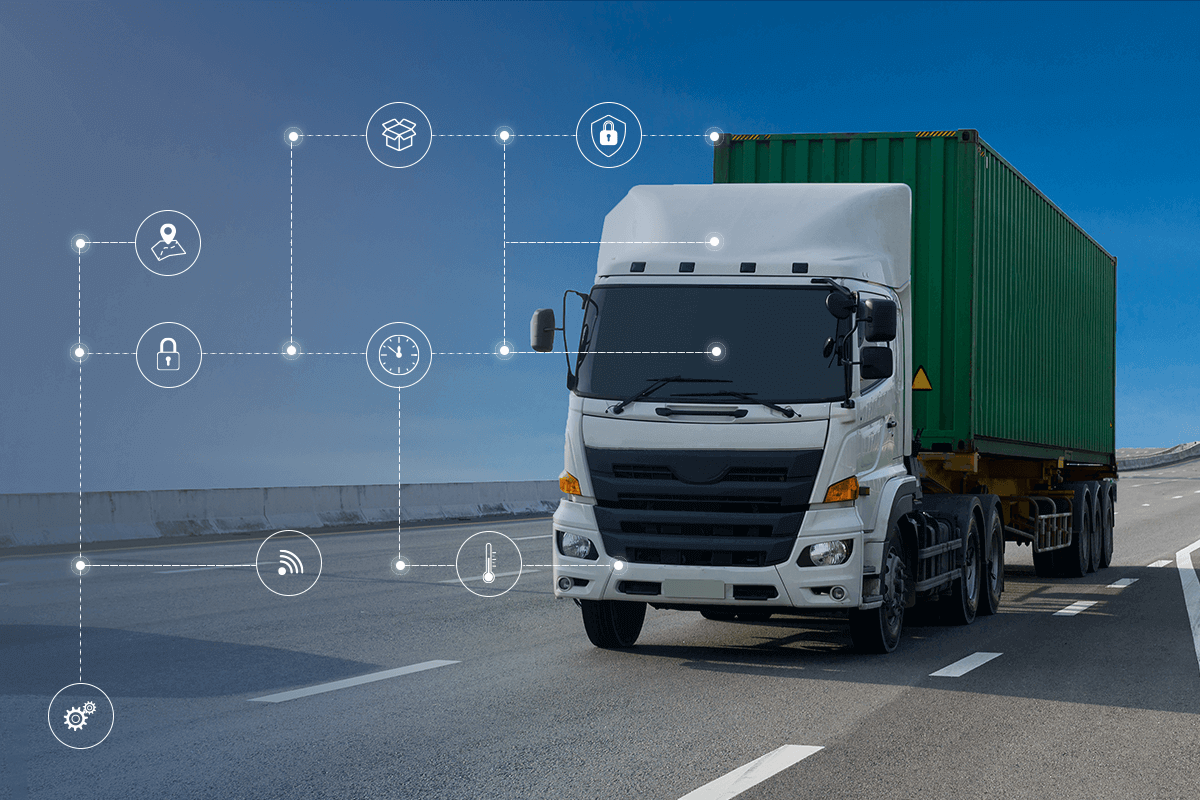
The fleet management system includes a web application for the central office that visualizes the data received from the IoT sensors.
1. Softengi places trackers with GPS/GLONASS receivers on the vehicles of a fleet management company.
Trackers transmit data via GMS to the Fleet management solution.
2. The Fleet management system in the office of the fleet management company receives the data from the trackers.
GPS (Global Positioning System) can locate a vehicle with maximum accuracy in minimum time. It includes 31 satellites. GPS position accuracy is 3.5-7.8m. The benefits of GPS trackers are long battery life, high precision, the possibility to use periodic or movement–based tracking, easy installation, and flexible configuration.
GLONASS, in its turn, is also a global navigation satellite system with 24 satellites and a little lower position accuracy of 5-10m.
Apart from location and movement tracking, Asset tracking solutions can track the crucial expenditure of fleet management companies – fuel.
- We place fuel trackers into the tanks of the machines;
- The fleet management system in the office of the fleet management company receives data about fuel use in real time.
The office can always know if there is enough fuel to complete the route in case of emergency if there is a leak or other type of suspicious activity with the tank.
Track Drivers’ Work Hours and Safety
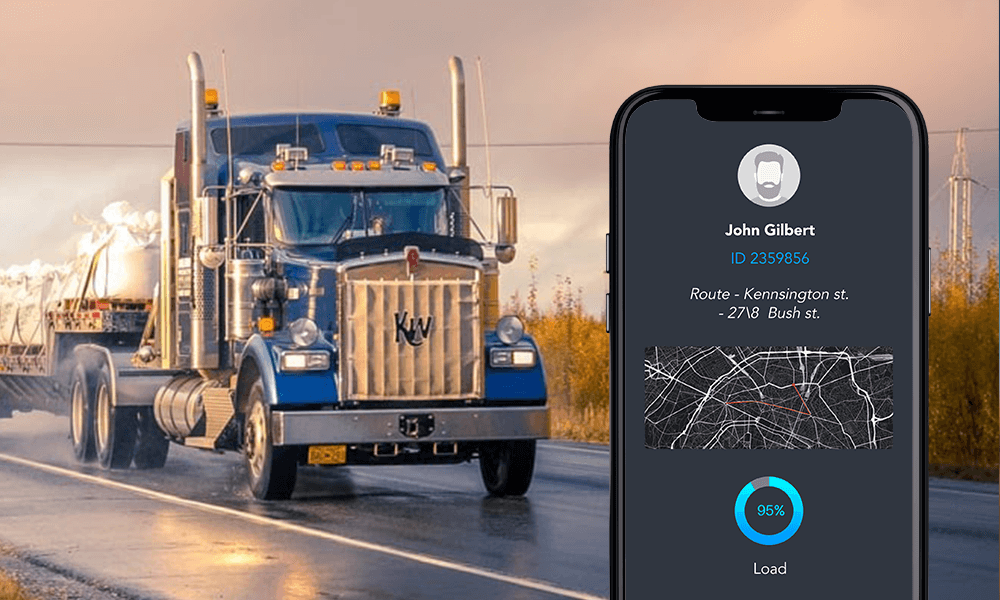
Personnel in the office of the fleet management company can always know the driver’s actual work hours at any time. Also, they can know if a driver is not at their workplace when they are scheduled to be. This is the reason to inquire about their safety on the route. In the office, the personnel has their work seats organized, especially now, and so should the drivers’ seats. The drivers’ health is important to the managers and the culture of the organizations. The high-tech solution here is a change in the hardware.
- We place into the machines of fleet management companies small on-board computers with Personalized Time-Tracking Systems;
- The Fleet management system in the office receives data from the onboard Personalized Time-Tracking Systems.
Usually, such time-tracking systems ask for the driver’s RFID card to start tracking. RFID Radio Frequency Identification is the most accurate type of identification. Drivers apply their RFID tags with personalized data such as name route/load/ID. The receiver/reader of the working time tracking system registers and saves this data. And managers in the office get this information in real time.
Learn Real-Time Fleet and Load Data in Integrated Maps
Personnel of the fleet management companies can see various types of maps with generalized information about their fleet and load on their PCs, laptops, and big screens such as:
- Maps of vehicles’ location and Auto-parks;
- Maps of vehicles’ movement and Routes;
- Groups of vehicles.
Generalized data that the Fleet management software displays on maps in real time gives a complex picture of what is happening on the routes with the fleet and load.
Compare Data in Graphs and Make Grounded Decisions
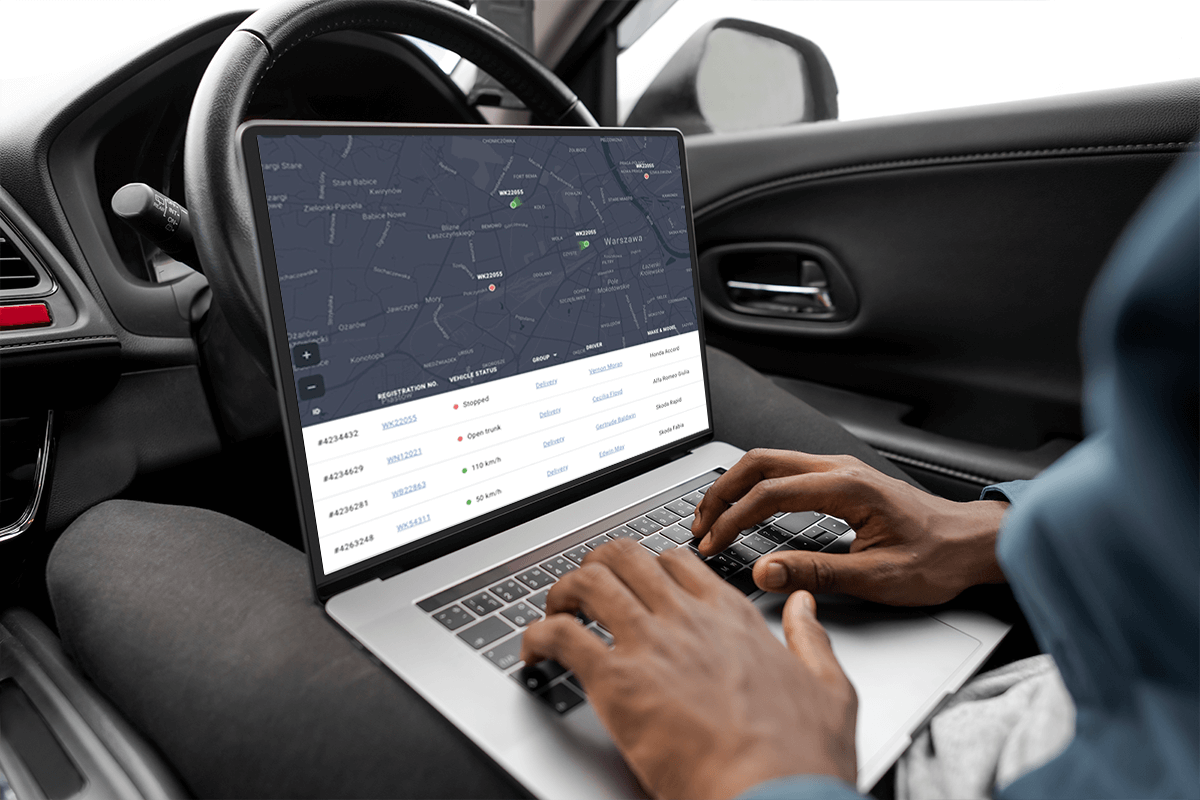
The Fleet management solutions can build graphs to show data received from the IoT trackers and make decision-making much easier.
- Graphs of progress;
- Graphs of status.
Management in the office can learn at any time if the situation on the routes and with the loads complies with the plan, is deteriorating or accelerating, and why. Based on the graphs, they can forecast the eventual results and make in-time decisions.
Filter oOut Statistics and Subscribe to Reports List
Fleet management solutions can filter out statistical data and present it in charts and graphs for better monitoring and management:
- Mileage
- Fuel
- Working hours
- Stops
- Events
The company can save specific filters and subscribe to the Reports list.
Bonus: Apply easily for warranty and post-warranty service of vehicles
The logical side-benefit of vehicle fleet management is the protection of the machines from burglary or sabotage and easy-to-get warranty and post-warranty service.
Get Notifications About Business Routine
In the Fleet management software, the fleet management companies can create any types of notification that the business can require and get notified if the event happens. For example, the company can get notified about the load and unload of a certain consignment, stops on the route, and route change.
Get Alerts About Accidents
Many types of suspicious or illegal behavior with the fleet, fuel, and load can be tracked and alerted in real time. Time and the exact type of illegal activity are crucial in handling the issues on the spot and with the insurance companies.
Create Digital Orders for Drivers
In the Asset tracking solutions, office personnel can create orders for drivers. The Fleet management system will, by default, copy them to the company’s Accounting system in a secure method that saves from double fill-out and accelerates the work process dramatically.
Create Waybills
Fleet management companies no longer need paper Waybills. They can make a business decision in the Fleet management software and in the same system, create Waybills, assign them to drivers and have the fields of the numerous Waybills auto-filled out.
Mobile App
With the mobile version of the Asset tracking solution, drivers of Fleet management companies can:
1. Keep in touch with the management;
2. Check-in the time of loading and unloading;
3. Receive tasks, notifications, and alerts.
The management can monitor and track the situations with the vehicles, load, and drivers 24/7.
Customer Satisfaction
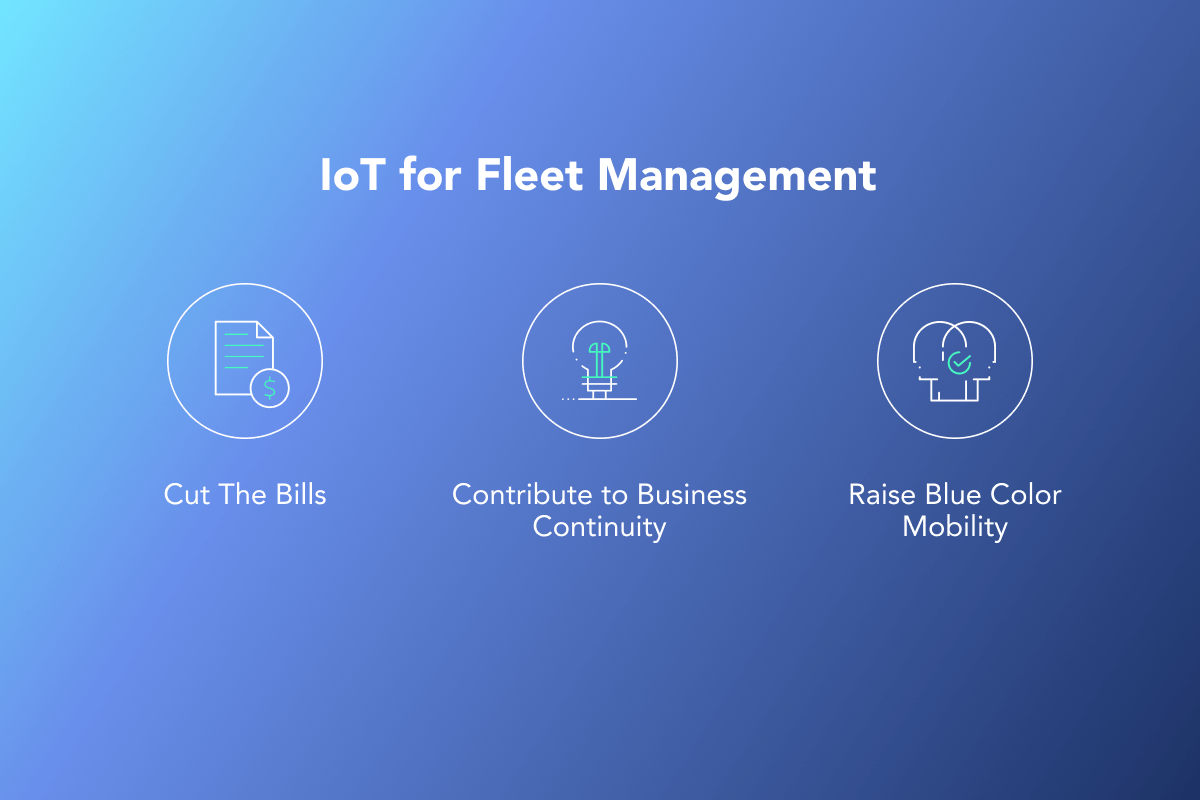
Fleet management software is bound to raise customer satisfaction and loyalty as it literally monitors every phase of the fleet management process, notifying and alerting personnel and connecting the office with the drivers to ensure the right consignment in the right place at the right time to the right customer.
Investment in infrastructure such as IoT for fleet management can cut the bills at the end of the year, contribute to business continuity, and raise blue-color mobility.
Conclusion
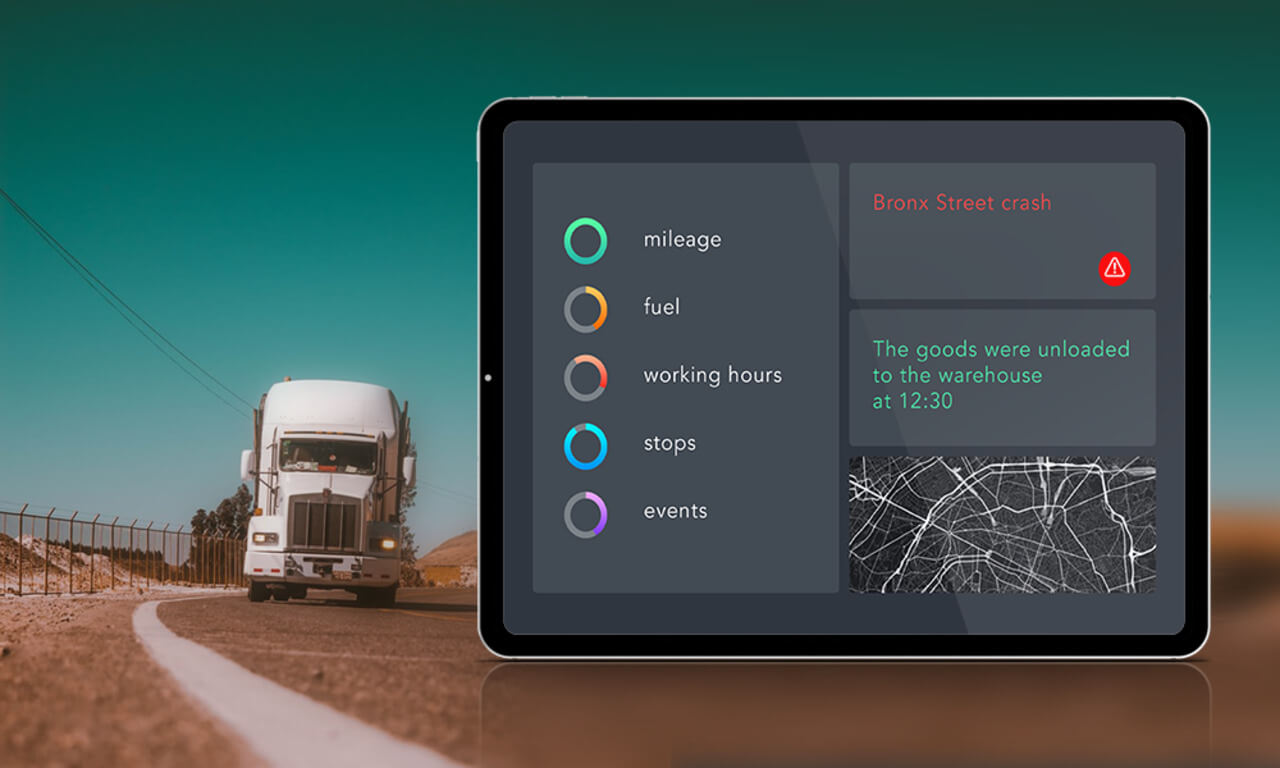
Historically, fleet management companies have continuously sought new models and tools to fight the consequences of new situations. The new post-pandemic situation is fertile ground for the new evolutionary curve for fleet management companies. IoT for Feet management and Fleet management solutions can bring into the office ready-made real-time data from any link of the chain out there on the routes, in the warehouses, with the drivers, load, and the fleet. Trackers of fleet location, movement, and fuel, as well as Personalized Driver’s Time-Tracking System, display data in real time on mobiles, and big screens, alert accidents, and report statistics to cut the bills, support in crises, and make the office personnel more mobile.





